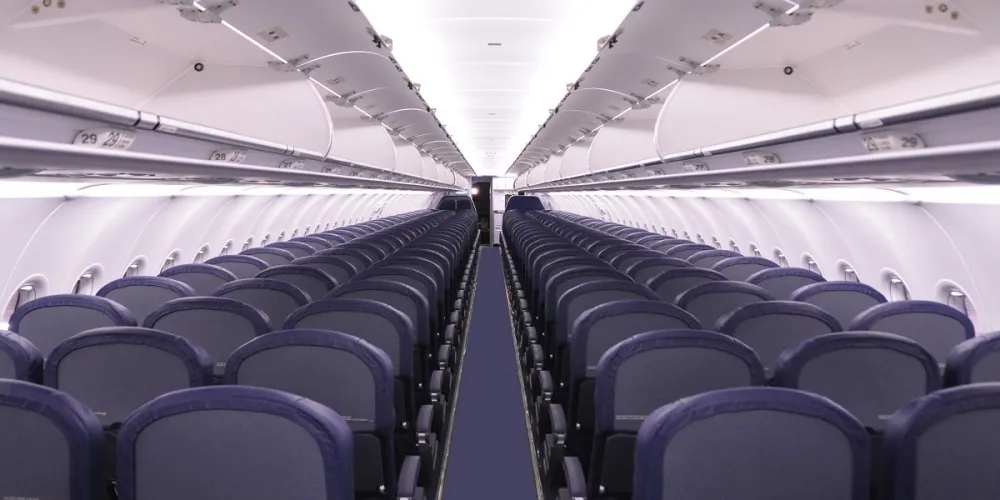
Seat crunch court ruling could affect the way we fly.
Aug 06, 2017

A recent court ruling regarding seat size and spacing on commercial flights may significantly impact the airline industry and passenger experience. The decision addresses concerns over cramped seating arrangements, which have raised issues related to safety and comfort. If upheld, airlines may be compelled to redesign their seating configurations, potentially leading to fewer seats per cabin and increased ticket prices. This ruling highlights the ongoing debate about passenger rights and the balance between profitability and comfort in air travel, prompting airlines to re-evaluate their policies to ensure compliance while maintaining operational efficiency.
The recent "seat crunch court ruling" has sparked significant discussions about its potential impact on the aviation industry and how passengers experience air travel. As airlines continue to navigate the complexities of passenger comfort versus profitability, this ruling could represent a pivotal moment in shaping future flight experiences.
The Background of the Seat Crunch Ruling
In essence, the "seat crunch court ruling" emerged from a lawsuit that challenged airlines' practices regarding seat sizes and spacing. Claimants argued that the current configurations are not only uncomfortable but may also pose safety risks during emergencies. The court's decision has prompted airlines to reconsider their seating arrangements and policies.
Impact on Airlines
The ramifications of the "seat crunch court ruling" are multifaceted. Airlines may need to redesign their cabin layouts to provide more space per passenger, which could lead to a decrease in the number of seats available on flights. This alteration may result in increased ticket prices, as airlines seek to maintain their profit margins while offering a more comfortable flying experience.
Moreover, airlines that fail to comply with the ruling could face legal repercussions, leading to potential fines and damages. The cost of redesigning aircraft interiors to meet new guidelines could also be substantial, forcing airlines to make tough decisions regarding fleet upgrades and maintenance.
Potential Changes in Seating Arrangements
One likely outcome of the "seat crunch court ruling" is the introduction of more spacious seating arrangements. This may include larger seat sizes and increased legroom, which have been long-requested by frequent flyers. Airlines might also explore innovative seating designs that optimize comfort without sacrificing capacity.
| Seating Option | Legroom (inches) | Seat Width (inches) | Passenger Capacity |
|---|---|---|---|
| Standard Economy | 30 | 17 | 180 |
| Improved Economy | 34 | 18 | 160 |
| Premium Economy | 38 | 19 | 120 |
| Business Class | 40 | 20 | 60 |
This table illustrates the potential adjustments airlines may consider in response to the ruling, reflecting a shift towards prioritizing passenger comfort.
Consumer Reactions
Passengers have largely welcomed the "seat crunch court ruling", viewing it as a step towards prioritizing comfort and safety in air travel. Many frequent flyers have expressed their frustrations regarding cramped seating and long flight durations, making the ruling a significant topic of discussion on social media and travel forums.
In the long run, consumers might find that the benefits of increased comfort outweigh the potential for higher ticket prices. As airlines adjust to meet new standards, travelers may experience enhanced services and amenities that improve their overall flying experience.
Industry Trends and Future Outlook
The "seat crunch court ruling" may also usher in broader industry changes. Airlines might adopt new technologies and materials that allow for lighter and more space-efficient designs, enabling them to maintain capacity while adhering to new comfort regulations. Innovations in seat design, such as modular seating arrangements and customizable options, could become more prevalent as airlines seek to differentiate themselves in a competitive market.
Additionally, the ruling could inspire new competitors to enter the market, particularly in the low-cost airline sector. Startups focusing on passenger comfort and innovative seating solutions may find a niche audience eager for alternatives to traditional carriers.
Conclusion
As the aviation industry processes the implications of the "seat crunch court ruling", both airlines and passengers must prepare for a new era of air travel. While the initial changes may come with challenges, the long-term benefits of improved comfort and safety could redefine the way we fly. With ongoing discussions about passenger rights and airline responsibilities, this ruling may signal a more significant shift towards prioritizing the traveler experience in the skies.
In summary, the future of air travel will likely see a balance between capacity and comfort, driven by consumer demand and regulatory changes. The "seat crunch court ruling" may very well be the catalyst for a much-needed evolution in how we think about flying.
Related Articles

Explore Thailand: The Best Islands to Visit for Paradise, Adventure, and Relaxation

The Ultimate Guide to the Best Islands in Thailand for Your Next Getaway

Do babies need passports? How to get a passport for a newborn

How to get a U.S. passport fast: here’s how to expedite the process

What is Mobile Passport Control: 5 reasons why you should use it

SENTRI vs. Global Entry: A detailed guide

Do you need a passport to go to the Bahamas? Let’s find out

Do you need a passport to go to Mexico? A detailed guide

Do you need a passport to go to Canada? We got the answer

Do You Need a Passport for a Cruise: An Essential Travel Guide

Booster Seat Requirements: All the Rules to Follow in Your Rental Car

What Are the World’s Most Powerful Passports, and How Does Yours Rank?

How to Take a Passport Photo at Home: A Helpful Guide

You've got to have heart! Southwest's new livery

Your opinion: Should water be free on low cost carriers?

Young women bolder than guys as solo travellers
